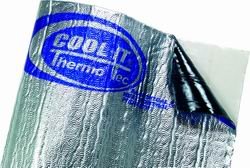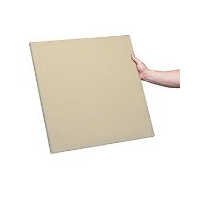Friday, March 30, 2012
Wednesday, March 28, 2012
Great Price Diversified for Floor Muffler Floating Wood and Laminate Flooring High-performance Acoustical Underlayment & Moisture Barrier with Self Sealing Overlap System
Cheap "Floor Muffler Floating Wood and Laminate Flooring High-performance Acoustical Underlayment & Moisture Barrier with Self Sealing Overlap System" Discount review update price today
Monday, March 26, 2012
The Different Types of Plastics and Their Uses
ABS : a terpolymer made from three monomers, acrylonitrile, butadiene and styrene. Acrylonitrile and styrene provide chemical resistance, butadiene adds impact resistance and makes the plastic suitable for furniture, computer housings etc.
Acrylic: a hard thermoplastic made from acrylic acid or a derivative of acrylic acid. Best known as a glass substitute, typically under the trade names Perspex, Lucite and Plexiglas.
Amino plastics: Plastics made from ammonia based compounds, namely urea formaldehyde and melamine formaldehyde.
Bakelite : really a trade name but frequently used as a generic name for phenol formaldehyde (phenolic).
Cellophane : A Du Pont trade name for film made from regenerated wood pulp (cellulose).
Cellulose : The fibrous matter in all plant cells, with a long chain molecular structure. The most common sources used for making plastics are cotton fibres and wood pulp
Cellulose acetate: A tough thermplastic made from cellulose in the form of cotton linters, treated with acetic acid and acetic anhydride. Used for many domestic mouldings such as spectacle frames, toothbrush handles, and as transparent packaging film.
Cellulose acetate butyrate: A thermoplastic made from cellulose treated with acetic and butyric acids. Transparent, opaque or coloured, with excellent moulding qualities, used where more moisture resistance and dimensional stability than cellulose acetate is required.
Copolymer: A plastic made by polymerizing two monomers, eg styrene and acrylonitrile .
Elastomer: A synthetic plastic with the flexible properties of rubber.
Epoxy resin: A very tough thermosetting resin used as a coating, or reinforced to make mouldings or laminates.
Ester : A compound produced by the reaction between an acid and an alcohol.
GRP : Glass reinforced polyester, ie polyester resin strengthened by glass fibres, making the resin, which has no strength of its own, into a very tensile material. Widely used to build boats, furniture and cars.
HIPS : High impact polystyrene
LLDPE : Linear low density polyethylene, a new type of low density polythene.
Melalmine : Melamine formaldehyde, a thermoset produced by reacting (triaminotriazine) with formaldehyde. A tough glossy plastic usually strengthened with a filler of wood pulp.
Monomer: A simple low molecular weight compound. Polymerization links monomers together to form high molecular weight polymers.
Nylon: Not one material but a group of very tough and flexible materials called polyamides. Thermoplastic and usually found as fibres or used solid, as gears, zips and more recently as dyed jewellery.
Phenolic: abbreviated version of phenol - formaldehyde. Phenolic is usually reinforced with a filler, but cast phenolic has no filler and can be translucent. It can be easily coloured and is used decoratively for jewellery, radio cabinets and all kinds of ornaments.
Polycarbonate : A very tough thermoplastic, usually found as a substitute for glass, eg: vandal proof telephone kiosks,bullet proof shields, baby bottles and picnicware.
Polyesters : Complex ester compounds which are thermosetting and can be polymerized at room temperature, eg GRP.
Polymer : Another word for a plastic material: one which has been made from chains of molecules of one or more monomers. Polymers (plastics) are organic substances, made from hundreds or thousands of molecules linked together in a repeating chain pattern (also known as macromolecules).
Polymerization : The chemical process of linking monomers to form new compounds called polymers. For example,ethylene is polymerized into polyethylene, (polythene for short).
Polypropylene : A thermoplastic polymerized from propene, very close to polythene in molecular structure, but harder, stronger and less flexible.
Polystyrene : A brittle.water white thermoplastic polymerized from styrene - (phenylethylene). The brittleness is overcome by adding some butadiene, which results in toughened polystyrene also known as high impact polystyrene (HIPS), a copolymer of butadiene and styrene. Expanded polystyrene is the rigid white foam used for packaging.
www.sourcingdatabase.com has lots of resources for those looking for sources of supply.
The web is a vast source of information. Sourcingdatabase collects into one huge database of contacts.
Sunday, March 25, 2012
Acoustiblok Demonstration
Friday, March 23, 2012
Quieter Drum Practice with Audimute Video
Thursday, March 22, 2012
Best cheap Thermo-Tec 14620 60" X 36" Heat and Sound Suppressor for $46.89 Thermo-Tec
Tuesday, March 20, 2012
Economy Foam & Futons - New York, NY
Monday, March 19, 2012
Check Out DEI Boom Mat 050130 Underhood Thermal/Acoustic Liner for $69.99 DEI
Sunday, March 18, 2012
Useful Information About Insulation
Insulation is a material that is used to slow down or reduce the flow of energy. The substances used to produce insulating materials are poor conductors of heat and electricity.
Insulators can be of several types. Thermal insulators slow down the transfer of heat energy, acoustic insulators reduce the flow of sound and electrical insulators prevent the flow of electrical energy.
Materials like fiberglass, rock wool and slag wool are widely used by the insulation industry. A large variety of materials may be used to make the insulators. These include organic, inorganic, rigid, soft, fibrous or granular materials. Generally, organic insulators are produced from petrochemicals and recycled plastic, while inorganic insulators are made from recycled glass and furnace slag.
An interesting research revealed that the insulation industry is among the leading industries in the U.S. It not only strengthens the U.S. economy and increases monetary savings for consumers, but also helps improve the state of the global environment.
The energy savings resulting from good insulation add up to big dollar savings. Interestingly, current insulation levels save U.S. homeowners approximately $74 billion dollars in energy costs each year, or an average of $780 per household. Without insulation, homeowners in the U.S. typically spend about $2,000 on energy each year; whereas, with the use of insulators, they spend an average of only $1,200. Current insulation levels have helped cut residential energy bills by forty per cent. Commercial building owners are also saving money on their heating and cooling bills by over $9.6 billion dollars a year nationwide, or an average of $2,100 a year per building.
Though existing insulation is saving enormous amounts of energy and pollution, there remains a substantial potential for cost-effective investments in building and industrial insulation. Residential buildings, commercial buildings and industrial plants, which are insulated with proper protocols, not only save energy but also help avoid a substantial amount of air pollution as well.
Insulation [http://www.i-Insulation.com] provides detailed information on Insulation, Foam Insulations, Home Insulations, Commercial Insulation Plate and more. Insulation is affiliated with HVAC Jobs [http://www.HVAC-Web.com].






